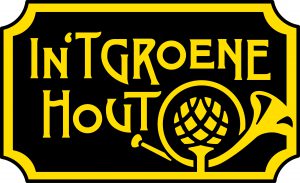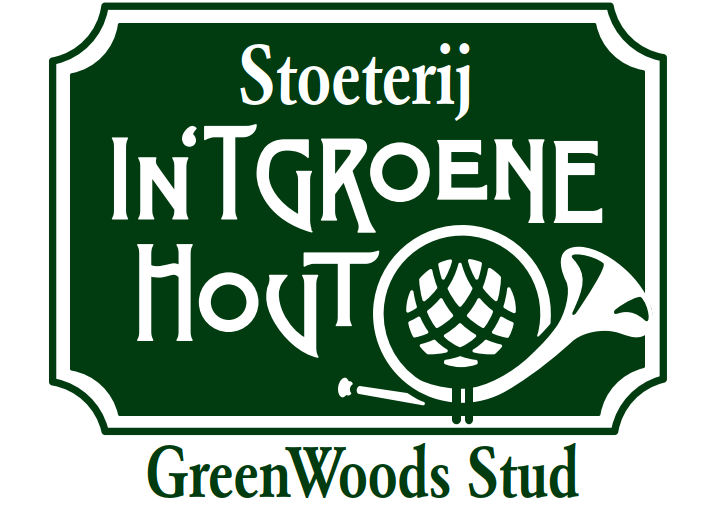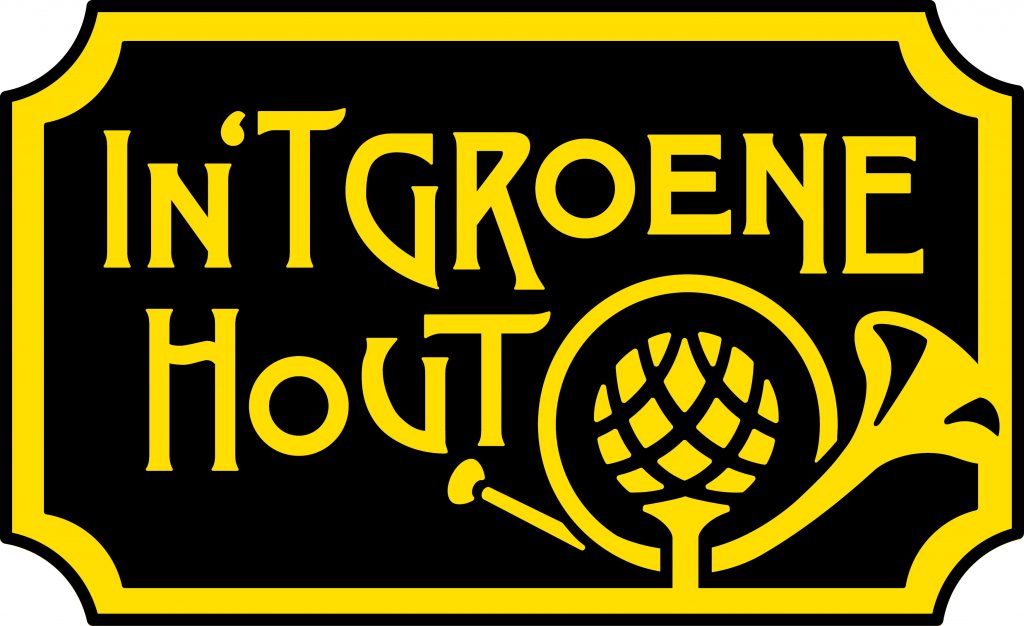THE FALABELLA COLLECTION LORD AND LADY FISHER'S HERITAGE
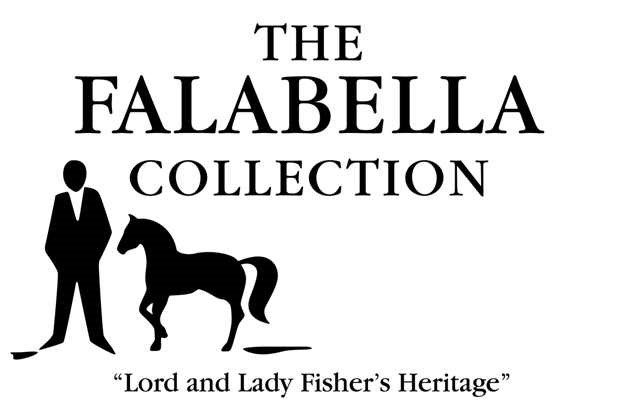
In 1991, after some fifteen years, Lord and Lady Fisher of Kilverstone in Norfolk, England decided to close down their highly acclaimed wild life park, the main attraction of which was their extraordinary herd of Falabella Miniature Horses.
These unique horses come originally from South America but their origins are obscure. Some say that a herd of horses had been trapped by a landslide in a canyon where the only food available was the local cacti and after many generations the genetic mutation occurred and others speak of the Cayak indians possessing the secret………
The extraordinary and unique mystery is that each generation produces a smaller horse. They are not ponies but perfectly proportioned miniature horses. Further, when a Falabella stallion is crossed with a mare of a larger breed, the offspring are mainly tinier versions of the mare. The elegance and sophistication of these precious animals has caught the public’s imagination.
We acquired the Falabella Collection the “Lord and Lady Fisher’s Heritage “. The horses arrived in The Netherlands at Christmas 1991. They included in Lord and Lady Fisher’s words “Pegasus of Kilverstone, the best Appaloosa Falabella Stallion we have ever seen “. We are most grateful to Lord and Lady Fisher for permitting us to continue their tradition and to quote parts of their letter and their fascinating memorandum of the 18th of December 1991.
Stoeterij In ‘t Groene Hout/Greenwoods Stud.
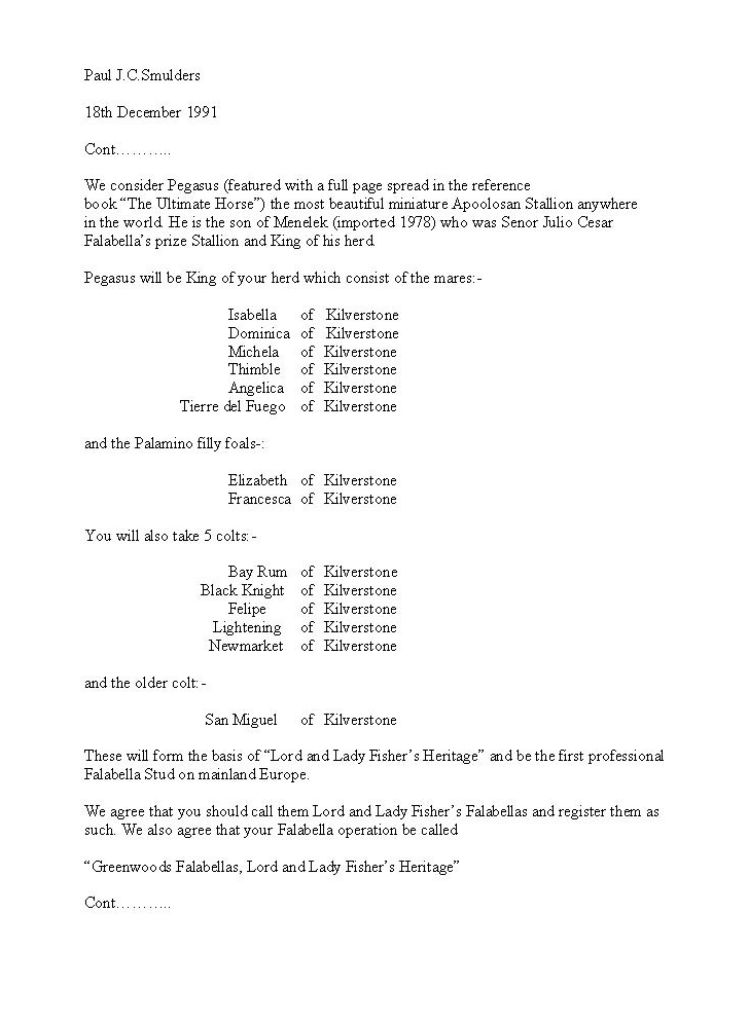
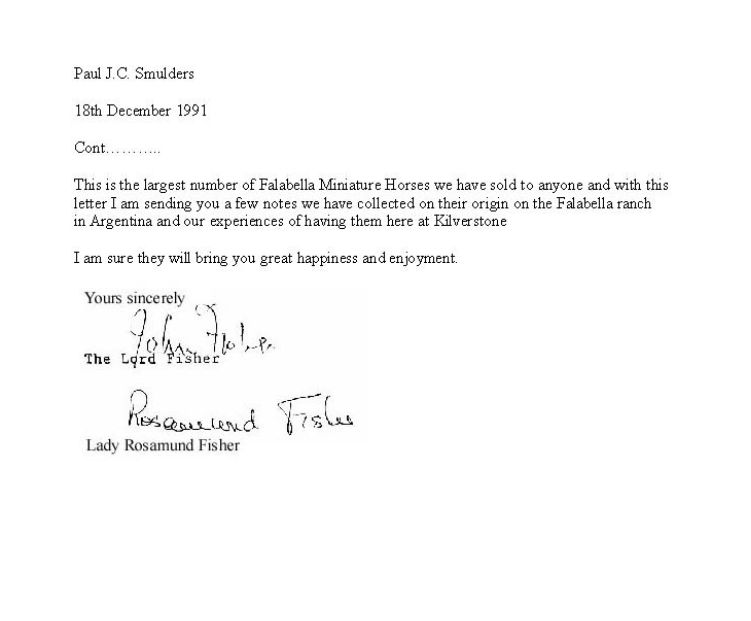
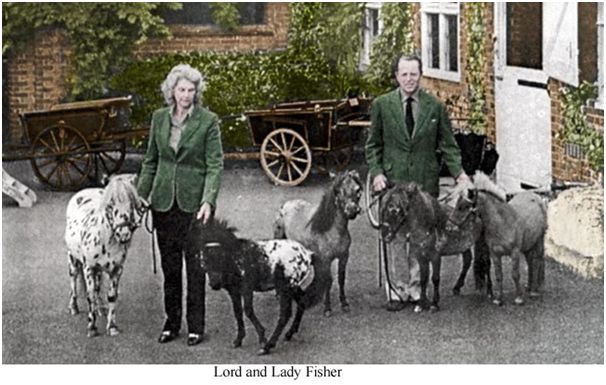
Memorandum
Since you are continuing our breeding programme of the Falabellas we would like to leave you with some background information.
It was February 1977 when we finally arrived at the ranch of Señor Falabella in Argentina and gazed for the first time on his legendary miniature horses.
Shortly after we set up our Wildlifepark at Kilverstone I came across a reference to the Falabella miniature horses and my curiosity aroused I tried to find out more about them, but it was clear that very little was known.
The Falabella breed originates only from Señor Falabella’s ranch in Argentina. Unlike the Shetland breed which is a small pony, the Falabella is a true miniature horse, the result of selective breeding from the Falabella blood line.
Personally, I think the most important aspect of the Falabellas is not so much that they are small but that they are perfectly proportioned little horses. It is like looking at a tho- roughbred-an Arab or a Hunter- through the wrong end of a telescope. They are a perfectly proportioned scaled down model.
Falabella miniature horses should never be confused with Shetland ponies. Shetlands have normal heads and bodies deep in the girth with short legs and particularly short cannon bones in the legs.
For their size, the Shetlands are the strongest of all breeds. They have been known to carry a man and his wife 26 kilometers and to have carried a man of 76 kilo 64 kilometers in one day.
Falabella has very fine bones in the legs in perfect proportion to their body, very small feet and cannot be ridden. They have many unusual features and I will say more about these later.
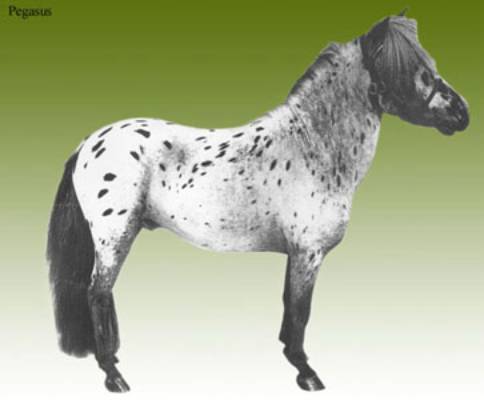
Some tall stories about short horses
I hoped to learn from Señor Falabella the true story of the origin of this breed for I had heard many different explanations of how these horses came to be so small. One story was that a herd of horses had been trapped by a land slip in a large deep canyon. The only food available was cactus plants and over several generations the horses became smaller and smaller.
According to this story they were found by the Falabella family and winched from the canyon and taken to their ranch. This seemed possible for something similar had in fact happened to a herd of Hereford cattle cut off in a canyon in the Rocky Mountains, for when they were found some years later their offspring were small and stunted due to the lack of adequate food and the right minerals in the soil. This did not of course explain how the surviving horses continued to breed small once they were getting plentiful supplies of food.
An Argentinian told me that the chief of the Cayak Indians had passed the secret of breeding these miniature horses to the Falabella family. Knowing the warlike nature of the Indians in the area and their need of war horses I rather doubted it.
Later I heard several other versions of the isolation story. One claimed that the horses had been found in a hidden valley in the Andes – a sort of Shangri-la – where everything including the plants were small and different!
Another claimed that the grandfather of the present Señor Falabella had sent some thoroughbred horses to a very barren and windswept part of Patagonia and then forgotten about them. Some years later so the story went, the grandchildren remembered the story of the horses and went to look for them. It is said that they found only tiny horses, apparently only the smallest had survived and found shelter and grazing on the low growing scrub. Unlikely perhaps but was it just possible?
The most improbable came to me from an Australian who wrote to say that he had heard that at one time the Falabella family employed a lot of Japanese on the ranch and it was they that had somehow managed to reduce the size of the horses. Knowing that the Japanese produced the miniature trees by growing them in small pots and pruning the roots I had visions of them rushing round clipping the horses feet’ and pushing them into tiny shoes! I do not know how all these stories originated because the true story of their origin as told me by Señor Julio Cesar Faballa, the grandson of the breed’s founder, is even more fascinating.
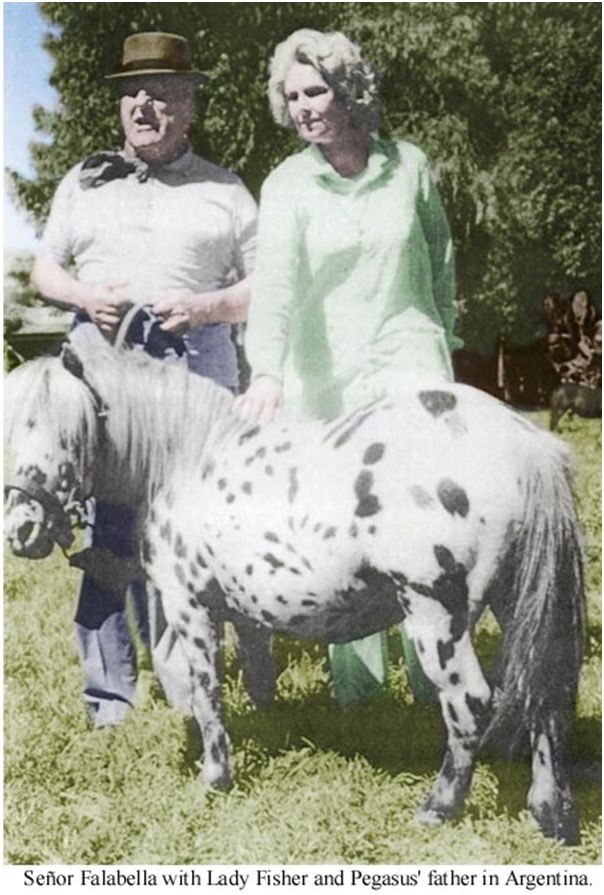
History of the breed as told to us by Señor Falabella
Last century there were in parts of Chile and Argentina a number of tribes of nomadic Indians that even the Spaniards had failed to subdue. They hated the white man and waged almost constant war on the settlers. Periodically they would descend on the ranches burning, looting and killing, taking prisoners and driving off the cattle which they would later sell. Their captives were hideously treated and few, if any, survived a raid. One of these early settlers was Señor Falabella’s maternal grandfather, an Irishman called Newton, who had a deep knowledge and understanding of horses. On the river which ran through his land Señor Newton had built a water mill. Every night stones were placed inside the mill wheel and the rumbling noise could be heard for miles. The Indians who were steeped in superstition thought he must be some kind of magician and kept well clear of his ranch.
There was a ford below the house and as this was the only water for some distance horses and other animals often came there to drink. Sometimes they still had their saddles on or were still harnessed to a car or wagon whose blood stained seats told of attack and murder by the Indians. That is why Newton always carefully watched wildlife around the ford. One day there appeared at the river a small horse that was quite different to anything that Señor Newton had ever seen. This tiny horse appeared to have what translates from the Spanish as “the dwarf sickness” but this is really misleading. This was no dwarf but a perfectly proportioned horse in miniature. Señor Newton was fascinated by the little stallion and he decided to keep it and breed miniature horses for his daughter, Señor Falabella’s mother. It was the offspring of this stallion that laid the foundation of the Falabella miniature breed. No one knows the story of that original little stallion; to whom he belonged, where he had come from and how he came to be that size will always remain one of the great unsolved mysteries.
On the Falabella ranch there are small horses of many sizes but only a few being the true small miniature. It may take several generations to breed down to the very smallest sizes of all. The Falabella carries a dominant gene that has the effect of shrinking down any larger horse that it is crossed with. The Falabella breed has within it the blood of many different breeds and all the colour markings-bay, roan, piebald, dappled, etc.- are present though the rarest of all are the spotted ones.
Ever since I had first heard of them I had wanted to breed Falabellas at Kilverstone. I was not however too hopeful of achieving this as our first attempts to obtain some had gone badly wrong. Now that we were talking with Señor Falabella things seemed more hopeful and I could not bear the thought that we might leave the Argentine without some of these enchanting little horses.
Although there were many on the ranch, about 400 we saw at first were far too big, and we were very disappointed that we had come all this way to find they weren’t really small. But of course it takes many generations to breed them down to the correct small size. We were taken to see “Menelek” (the father of “Pegasus”), Señor Falabella’s prize spotted stallion. I had fallen in love with a photo of him when he was foal. Señor Falabella said I could buy him and we went off to see him. He was with a few other spotted ones running with the 152 cm Appaloosas he was bred down from.
This is the reason Falabellas are perfectly proportioned replicas of larger horses. They at first of all crossed with the larger breeds of horses, but then it takes many generations of breeding and selecting to get them fixed down to the mini size. All the different colours are bred down in this way from their larger cousins.
So the big herd of 400 were ones at the inbetween stage. They could breed the right size very small ones only if the right mare and stallion mated .
Falabellas are a breed still in the making though the Falabella family have been breeding them for 130 years or more, but originally in this rather hit and miss manner with the stallions selecting their own makes in a herd of several hundred.
Señor Falabella took us off to see three small herds. The first about 15 little mares with a very tiny stallion, then another group of 20-30 right size little ones and a last to a group of about 20-30 very little ones. Señor Falabella said I could pick out the one I wanted. I picked out 4 stallions and a number of mares and that was the basis of our herd at Kilverstone. We had a very careful breeding programme putting the right stallion with the right little mare and on the whole have always bred ours smaller than their parents.
Señor Falabella was very loath to part with any little ones and in the past has always castrated the stallions and even doctored the females before they were sold. In fact he rarely parted with any and President Kennedy, whose family was fascinated by them had been able to obtain only a mare and a gelding. Luckily for him we are told the mare was pregnant, unknown to Señor Falabella so at least they had one foal. After visiting the many different paddocks we told Señor Falabella of what we hoped to achieve at Kilverstone and of our wish to create a Falabella stud that would be the first in Europe.

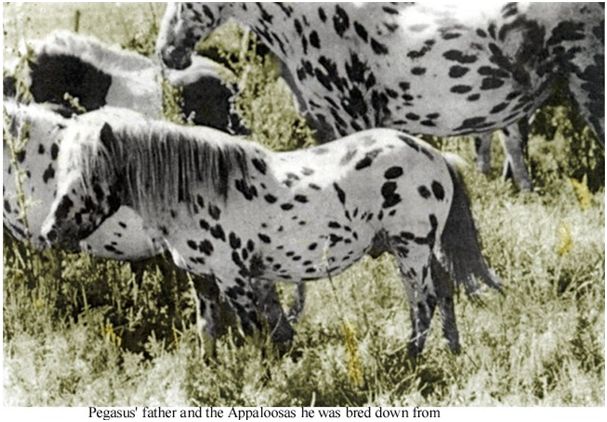
Breeding Falabellas at Kilverstone
To our great delight he agreed that we could purchase four stallions and some mares, all of the smallest sizes and including some of the rarest colours. Three weeks later our miniature horses arrived in Britain and created a tremendous amount of interest.
Until recently the Falabellas were well established and breeding at Kilverstone. They were on public show throughout the year and one could see them both in their paddocks and special stables. Each day in the summer we had a demonstration of them and put on a jumping display. They travelled all over the country and sometimes abroad with us to appear on television shows and make appearances for charity. Above all though we and many others were learning a lot from this very unusual breed.
Newmarket is not far from Kilverstone and is the world centre of Horse racing and thoroughbred breeding. Here too is the famous Equine Research Station whose scientists have become very interested in our miniature horses. For the first time scientists at the Station were able to obtain X-Ray pictures of all the internal organs of a horse. Not only the large thoroughbreds but even a small pony is too deep through for these organs to show upon an X- Ray. The much smaller and narrower body of the Falabella miniature horse makes this possible.
Another study involves the scientists looking at the behaviour, health and physiology of the herd as a whole. Rarely is it possible to study such things as body temperature through the day, every day, in a large group of horses living a varied free life. This was done at Kilverstone and it was surprising to find just how much the internal body temperature of the horses varied during the day and from day to day.
Type of care required
Falabella miniature horses require much the same care as normal large size horses, except in much smaller quantities. Half a hectare of grazing is sufficient for two miniature horses. It is possible to keep one in a good size back yard with supplemental feeding. A bale of hay will usually last a miniature horse for a month and approximately half a kilo of good grade commercial food per 50 kg of body weight is normally adequate as a daily ration for a stabled horse. If kept in a small space they should be taken for a walk (like a dog). But if they have enough space to run around and kick their heels up, they can get all the exercise they need.
With any large concentration of individuals there is always a risk of sickness or parasites being passed from one to the other. Health care at Kilverstone was basically preventive so that through careful heating and ventilation of the stables we aimed to cut down on chills and respiratory infections. All the horses were routinely vaccinated for influenza and tetanus. Worming was carried out every six weeks and this was supplemented by pasture management. All droppings were cleared from the paddocks daily and grazing in the paddocks was done on rotation. In this way we avoided the build up of parasites on the vegetation or of any significant numbers within the animals themselves.
At Kilverstone we have crossed our stallions with the mares of larger breeds to reproduce miniatures. Amongst the crosses attempted so far are those with an Arab and also a Shire. Our stallions were not of course able to mate directly with these larger mares and fertilisation is achieved by artificial insemination (A.I.). The appearance of the foal is to some extent related to the physique of the parents so that to produce the really fine miniature horse type it is necessary to use the finer mares. The cross is always made using the miniature stallion to a larger mare .
The cross of a Falabella and a Shire horse was not really a success. I was longing for a mini Shire with large feathery feet but the Falabellas have such fine boned legs and such dainty small feet that this didn’t work out as I’d hoped.
Then I bought Twin Arab mares of the best Crabet breeding. The Arab mare was 152 cm and Chico the Falabella stallion in only 74 cm high. Nature is wonderful. The foal when born was the same height as father, even then he could only just reach his mother’s milk by standing on tip toe. If he had been any smaller he could not have drank. But he was a stallion and to keep on breeding down in size we would need a mare from that cross. We decided to concentrate on breeding the Falabellas alone .
Señor Falabella told us how long the mares would take to have a foal. “Their gestation period is nearer to 13 months as against the 11 month gestation period of most horses and ponies”. This we found was true of ” Pepita ” the first of our mares to foal at Kilverstone, who took 12 1/2 months to have her first foal “Evita”. But we think that must have been something to do with Argentina, perhaps climatic conditions, because after that year all the other mares have taken the normal 11 months to have their foals. The foals when they are born are adorable, normally they range in size between 41-52 cm in height at birth. At Kilverstone each year we had four or five foals that are 38-41 cm at birth.
Most horses continue to grow until they are five or six years old but the Falabella makes 90% of its growth in its first year and is fully grown by 3 years old. Most of the foals are born in April, May and June so that early summer is an ideal time to see the very small foals at play in the paddocks with their mothers.
Falabellas are of course too small and delicate of bone to take the weight of a rider. Their skeleton is also different in that they have two less ribs and two less vertebrae than other horses so Señor Falabella told us. They can however be harnessed and in a small lightweight cart can pull an adult person or several children.
To me one of their most attractive features is their kindly temperament and considerable intelligence. They are very affectionate, easily trained and enjoy human company. Those that took part in the demonstrations in the Park, such as the miniature show jumping course, did so with great enjoyment. For example if put to graze in the field where the jumps are they will often just went over the jumps on their own for the fun of it.
Once the girl grooms came to me and said they wanted to jump Prudence, but her foal Samantha was so small she could get out under the fence and was bound to follow mother. So I said bring in mother and I’d hold Samantha in the centre of the field and she could watch mother jump. But Samantha has a mind of her own. She wasn’t going to stand and watch. She was going to follow mother over the jumps. This she did and when she came to one or two jumps that were too high for her she just ran around them and joined mother for the next jump. Their jumping ability is very considerable and if allowance is made for their small size and their performance scaled up they would out jump our leading show jumpers and cross country eventers by a very considerable margin.
People often asked me what is the point of breeding such a small horse that cannot be ridden or do useful work. To some extent such a question suggests that such people have only a limited understanding of the pleasure that comes from keeping animals and one is tempted perhaps to reply “They are very good for loving! “ and make a lovely pet, very affectionate and gentle, as well as being very good lawn mowers -the only sort I can start! To me they are something quite uniquely fascinating and a part of our animal heritage that is to be cherished and preserved along with our wildlife, great works of art and historic buildings. There are though some practical considerations and I know of number of people who have kept riding horses all their lives but who can no longer cope with the very considerable work involved and now have a miniature horse. They provide just as much pleasure and companionship as their larger cousins but are easier to handle, look after and feed. They are excellent pets, although I must admit being the rarest hores in the world they are very expensive.
A word of warning
People were always writing to us saying “I bought a Falabella the other day…” well the answer is they haven’t. They have been told it is, or because it is small they assume it is. But as I tell them no matter what size, a small Shetland, or whatever it is, you will get a lot of fun from it and can love it just as much. Just as one can love a mongrel puppy as much as a pure bred very rare breed of dog. But the sad part is these people have no doubt paid a very high price for their so-called Falabella.
When I was first looking for Falabellas I did not know there were non in England and they could only be obtained from Señor Falabella himself in Argentina. They are not a native breed in Argentina like Dartmoor, Exmoor, New Forest and Shetland ponies are in the UK. The Falabella can only come from the Falabella family in Argentina who alone have bred them and as stated earlier, are loath to part with any breeding stock.
So when I was first looking for them all sorts of people sold me all sorts of small Shetlands saying they were Falabellas. When I asked how and where they had come to Argentina etc. they had all sort of wild stories; lost, stolen or smuggled. I am a trusting and a gullible person and didn’t like to doubt them. But I hate to see other people “had” and taken for a ride as I was at first – before we went to Argentina and bought our herd from Señor Falabella.
I believe there is a woman in Sussex who said she had Falabellas, when asked how she could tell they were Falabellas she said “because they have pink skin round their heels”- well so have I! There is a man in the South who said he is so pleased, every time I’m on TV with the Falabellas he sells masses of his mini Shetlands. Whether they are called Falabellas or the public assume they are I don’t know.
A man in Surrey admitted he had registered some New Forest pony foals as Falabellas at Gettesburg in the USA. He was not asked to send photos, give their height or explain how he got them from Argentina. A man in the North who sells mini Shetlands for up to Pnd. Strl. 25,000 each, gives the impression they are all Falabellas so I was told by a prospective buyer. It is just a case of people jumping on the band wagon. A man in East Anglia wanted to advertise on TV that he had Falabellas, he was told “no-we know Lady Fisher has the only ones in this country”.
But the advise I give is if your are offered a Falabella ask to see the press cutting of when the horses arrived in this country from the Argentine. For that is where they must have come from if they are true Falabellas. They are so rare that there would have been some press coverage, or ask to see the papers of transport form Argentina. If not of the ones you are offered at least of their parents or grandparents.
To begin with I found I’d only sold our Falabellas to Princes and Princesses. But one soon runs out of Princes! They have gone to three Royal Families and we have sent them to the USA, Australia, the Middle East, East and West Germany, Italy and Central America.
The Falabella Collection 'Lord and Lady Fisher's Heritage'
See subpage
